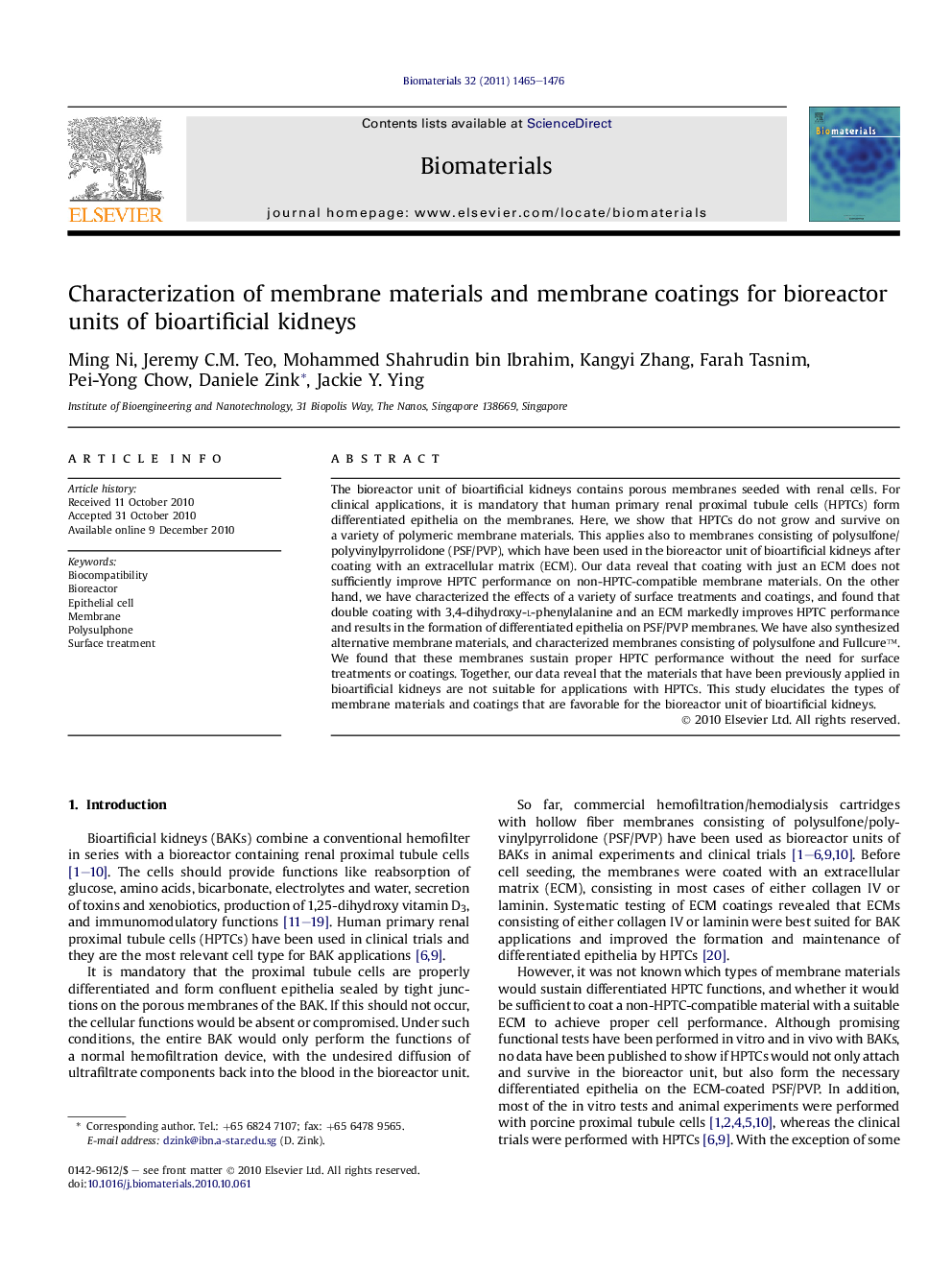| Article ID | Journal | Published Year | Pages | File Type |
|---|---|---|---|---|
| 8585 | Biomaterials | 2011 | 12 Pages |
The bioreactor unit of bioartificial kidneys contains porous membranes seeded with renal cells. For clinical applications, it is mandatory that human primary renal proximal tubule cells (HPTCs) form differentiated epithelia on the membranes. Here, we show that HPTCs do not grow and survive on a variety of polymeric membrane materials. This applies also to membranes consisting of polysulfone/polyvinylpyrrolidone (PSF/PVP), which have been used in the bioreactor unit of bioartificial kidneys after coating with an extracellular matrix (ECM). Our data reveal that coating with just an ECM does not sufficiently improve HPTC performance on non-HPTC-compatible membrane materials. On the other hand, we have characterized the effects of a variety of surface treatments and coatings, and found that double coating with 3,4-dihydroxy-l-phenylalanine and an ECM markedly improves HPTC performance and results in the formation of differentiated epithelia on PSF/PVP membranes. We have also synthesized alternative membrane materials, and characterized membranes consisting of polysulfone and Fullcure™. We found that these membranes sustain proper HPTC performance without the need for surface treatments or coatings. Together, our data reveal that the materials that have been previously applied in bioartificial kidneys are not suitable for applications with HPTCs. This study elucidates the types of membrane materials and coatings that are favorable for the bioreactor unit of bioartificial kidneys.
